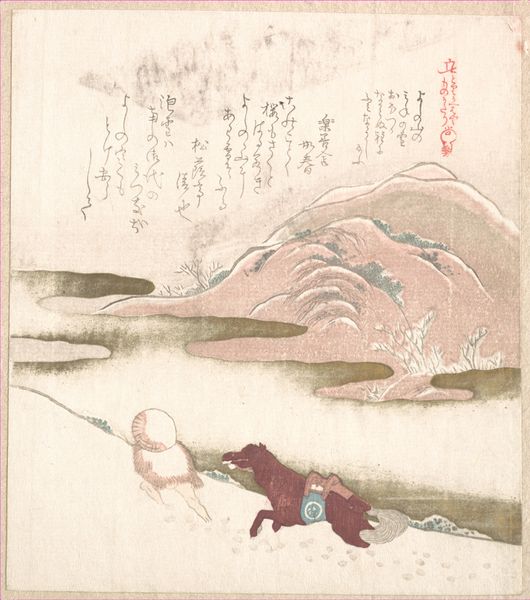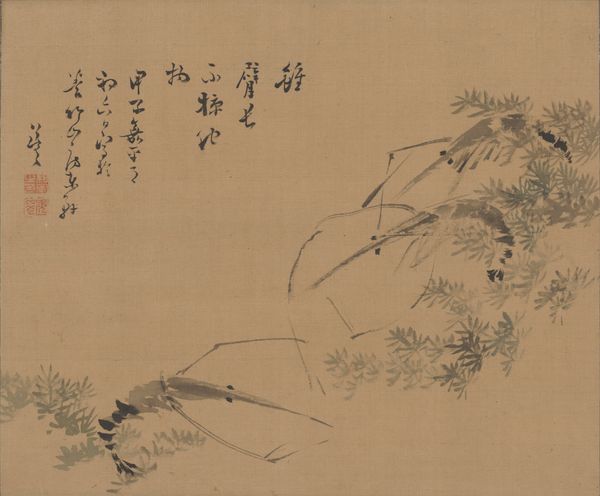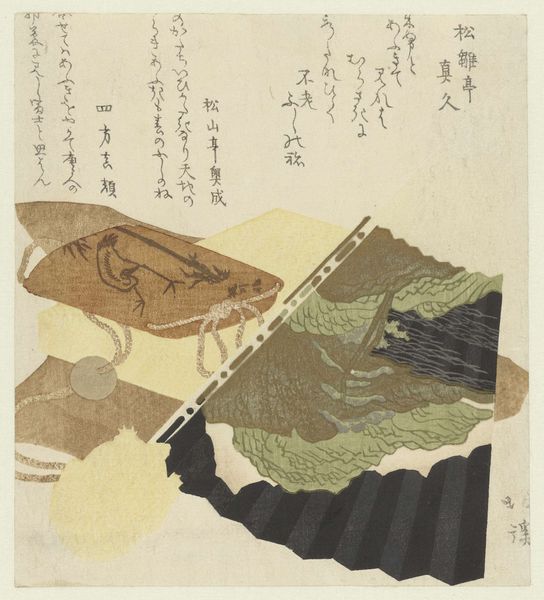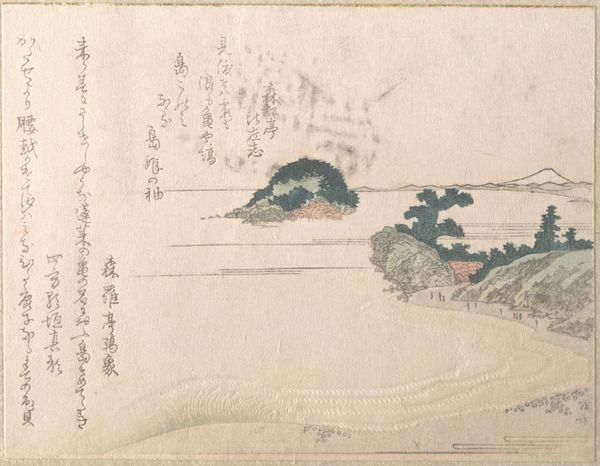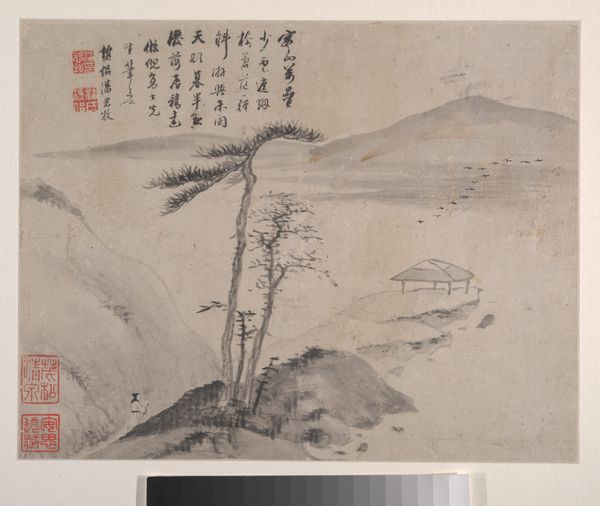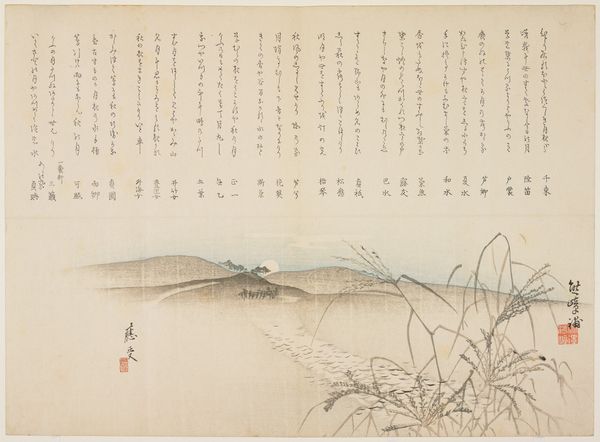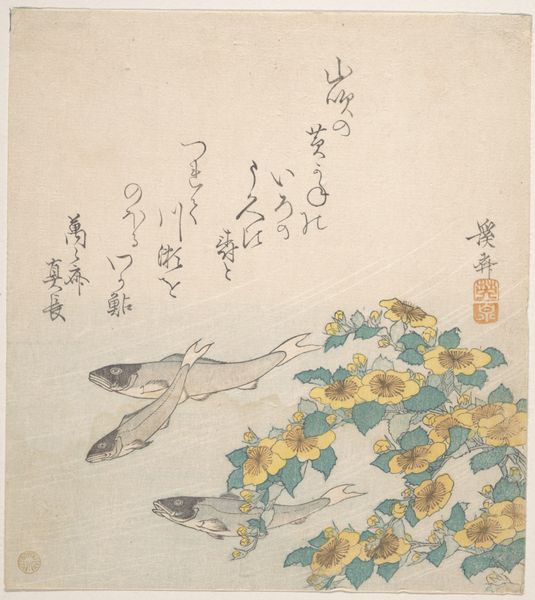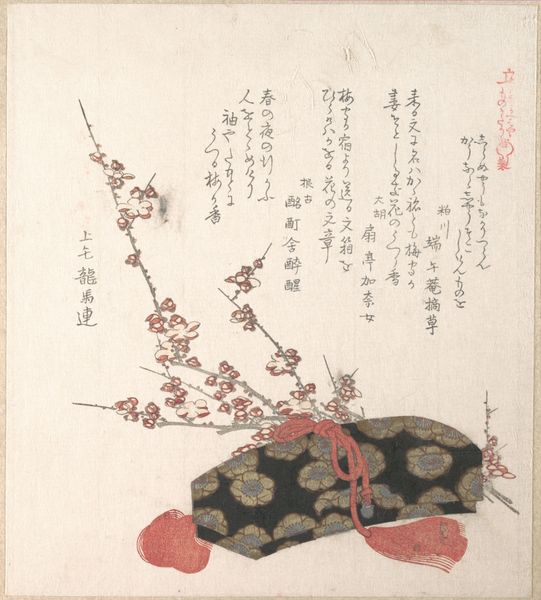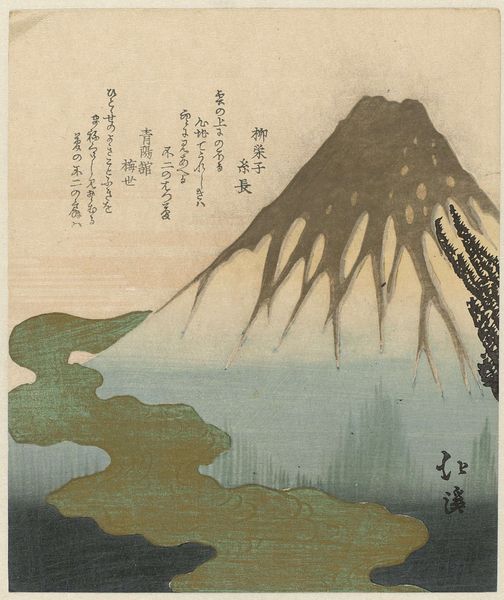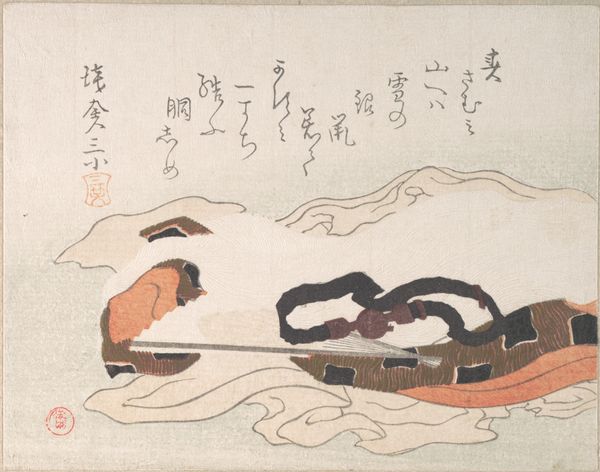
print, woodblock-print
# print
#
asian-art
#
landscape
#
ukiyo-e
#
woodblock-print
Dimensions: 8 1/16 x 7 3/16 in. (20.5 x 18.3 cm)
Copyright: Public Domain
Curator: This work is titled "Setting Moon on Waves," created in the 19th century by Kubo Shunman. It's a woodblock print, very much within the ukiyo-e tradition. Currently, it resides here with us at The Met. Editor: Immediately, I am struck by the dynamic yet tranquil mood it conveys, paradoxically achieved through contrasting the jagged lines of the shoreline against the softly setting moon. What grabs you first? Curator: The way it captures the intersection of natural beauty with social commentary typical of ukiyo-e. It seems Shunman’s choices here create a unique viewing lens into the floating world through commentary about human relation to nature, especially in times of rapid societal transformation. Editor: Note the masterful use of line – observe the carefully incised marks that create the illusion of wave movement, balanced by the smooth gradation of color used for the moon, a testament to Shunman's technique, inviting philosophical exploration into the dualities of the world. Curator: And, how this composition subtly challenges social hierarchies. Think of the way traditionally dominant landscape art centered the powerful and elite. Here we find instead common access, focusing on the transient beauty experienced by anyone on a beach or a shoreline, democratizing beauty. Editor: Let's not forget the poetry inscribed on the work—a critical element. What interpretive layer does this text add when coupled with the visual elements, especially since the two work as a unit and a unified experience for the viewer. Curator: Precisely! The inclusion of poetry allows Shunman to connect not just to place, but personal reflection, enriching the social and political contexts of his art making—emphasizing the complex interrelationships within this single piece. Editor: Yes, by visually deconstructing its composition, appreciating its texture, the color, the way that moon rests there in a stable gradient balance over the restless wave action… we unlock new realms for semiotic, philosophical contemplation. Curator: I'm continually inspired to see art as not only about history, but about where it places us in critical conversations about societal issues, and its legacy for us today, long after the artwork first made an impression on its original audience. Editor: And for me, by decoding the intricate visual structure of works such as these we develop tools to navigate the human experience of aesthetics across centuries, so we will be ready to receive fresh impressions when approaching works by artists now working.
Comments
No comments
Be the first to comment and join the conversation on the ultimate creative platform.
